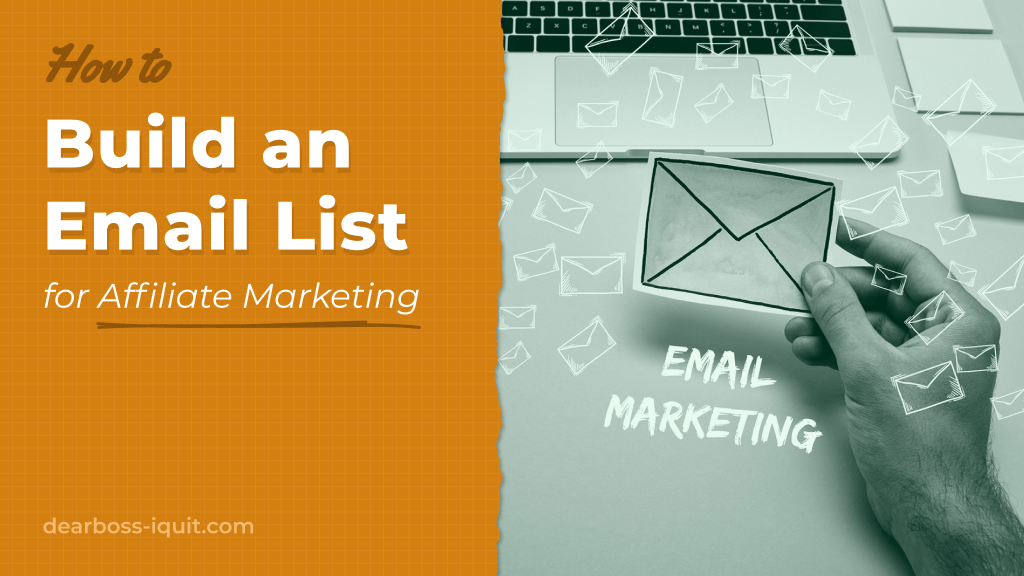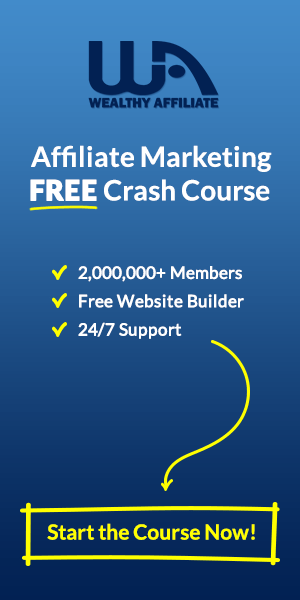Despite its old origins, email marketing is still considered the Holy Grail of affiliate conversions driving an average ROI of 3600% (source). That’s because, unlike other marketing channels, email marketing enables you to conveniently deliver content directly into your audience’s inbox whenever you want.
That can lead to increased exposure, engagement, credibility, loyalty, and subsequently sales.
However, that’s only if you know how to do email marketing the right way. If you don’t, you’re in the perfect place!
This article is dedicated to sharing with you six valuable tips on building an email list for affiliate marketing, along with strategies to leverage that list toward boosting your affiliate revenue.
Let’s take a closer look!
6 Tips to Build an Email List for Affiliate Marketing
1. Opt for an Email Marketing Platform
The first step to building an email list for affiliate marketing is opting for an email marketing platform. There are plenty of options, each offering different features and pricing, including:
- MailerLite
- Aweber
- Mailchimp
- Constant Contact
- Moosend
- etc.
Here’s how to uncover the ones that best suit your needs.
- Do your research: Focus on platforms that offer features you need (e.g., automation, list segmentation, templates, and integration with other third-party affiliate marketing tools you use)
- Analyze your competitors: If your main competitors use a specific platform, chances are it comes with features that’ll meet your needs as well
- Consider your experience: If you’ve never used an email marketing platform before, starting with a beginner-friendly one could make your life a lot easier
2. Build Opt-in Forms
Once you’ve signed up for an email marketing platform, it’s time to start crafting opt-in forms. These are forms meant to capture users’ email addresses and can be placed in several places, such as:
- Popups
- Landing pages
- Squeeze pages
- Website header/footer
- Floating bars
- Sidebars
- etc.
Here are some tips for creating higher-converting opt-in forms:
- Ask for as little information as possible (e.g., only name and email address)
- Assure users you’ll respect their privacy
- Tailor your copy to your target audience’s needs and preferences
- Create an eye-catching design with an engaging headline
- Focus on responsiveness to ensure cross-device accessibility
Lastly, consider double opt-ins to ensure the email addresses you collect are valid. That can help reduce your email bounce rate and save resources that would otherwise be wasted on maintaining non-existing user accounts (the more email subscribers you have, the more money you’ll be charged by email marketing platforms).
3. Create Lead Magnets
The term “lead magnet” refers to a resource offered to users in exchange for their email addresses. Its purpose is to act as an incentive that encourages potential leads to subscribe to your email newsletter.
Lead magnets come in many different shapes and sizes, like ebooks, templates, discounts, case studies, free trials, etc.
Here are some tips for creating quality lead magnets that’ll boost your conversion rates:
- Deliver Value: If the lead magnet you offer delivers no value, no one will bother exchanging their email address with it. Therefore, make sure your lead magnets are tailored to satisfy your target audience’s needs.
- Outline the Benefits: Clearly stating the advantages of gaining access to your lead magnet will significantly boost its appeal.
- Make it Unique: Internet users may come across dozens of lead magnets every single day. Making yours as unique as possible can help you stand out from the crowd and gain a competitive edge.
4. Generate Traffic
Once everything’s in place, it’s time to start driving traffic to your opt-in forms. As a rule of thumb, the more traffic you generate, the more subscribers you’ll gather.
Building traffic can be accomplished by leveraging several approaches, including:
4.1 Paid Ads
This approach involves paying money for placing ads on third-party digital platforms.
Paid ads can be broken down into multiple different categories, such as:
- Display Ads: Banners, texts, or images placed on other websites
- Paid Search Ads: Displayed on search engines like Google & Yahoo
- Social Media Ads: Served on websites like Facebook & Instagram
- Instream Ads: Video promotions shown before or during video streaming
- Solo Ads: Email campaigns delivered to the email subscribers of other marketers
Running paid ads is one of the fastest methods to start acquiring traffic. However, the downside is that there’s no guarantee that the traffic you pay for will convert to buying customers.
Newcomers to affiliate marketing may initially experience financial losses until they’ve gathered enough experience to start putting together profitable paid ads campaigns.
4.2 Content Marketing
Content marketing is the process of creating and publishing content online.
Content can come in many different shapes and sizes depending on the requirements of the specific marketing channel through which it is being distributed…
For example, while a blog can be used to host long-form articles, how-to guides, and listicles, Instagram gears more toward visually appealing images, short videos, and stories.
Content marketing can be done via a vast range of diverse platforms, such as:
- Website/Blog
- Social Media
- Youtube
- Forums
- Content Publishing Platforms
- & more
Leveraging content marketing can help you reach a wider, more diverse spectrum of leads. On top of that, producing valuable content will boost your credibility and subsequently your conversion rates.
4.3 SEO (Search Engine Optimization)
SEO (Search Engine Optimization) refers to the process of getting your content to rank in higher positions when specific keywords are queried on search engines (e.g., Google, YouTube, etc.).
That’s because the better a piece of content ranks, the more traffic it receives.
SEO involves implementing a set of various practices, including:
- keyword research
- building backlinks
- UX optimization
- updating content
- A/B testing
- meta tag optimization
- delivering value
- & more
5. Nurture Your Email Subscribers
Building an email list is merely the first step toward using email marketing to boost your affiliate earnings.
Next comes nurturing your email subscribers. That’s the process of building and maintaining a healthy relationship with them by consistently engaging, delivering value, and guiding them through a journey that’ll hopefully end with them converting into customers.
Here are some strategies to nurture your email subscribers:
- Welcome Series: A series of emails that automatically starts dripping to your subscribers upon joining your list. These emails can be used to introduce yourself, set expectations for the type of emails you’ll be sending, provide information about your business, deliver content, and even promote affiliate products.
- Valuable Content: Regularly send emails that offer valuable content related to your niche or industry. This could include tips, tutorials, industry news, or exclusive insights. Make sure the content is relevant and genuinely helpful to your audience.
- Personalization: Use personalization in your emails by addressing subscribers by their name and tailoring content based on their preferences or past interactions. This helps to create a more personalized and engaging experience, making subscribers feel valued.
- Segmentation: Segmenting your email list based on various criteria (e.g., demographics, preferences, location, etc.) can help you tailor your campaigns to resonate more with specific target groups.
- Engagement Campaigns: Encourage engagement by using surveys, polls, short interviews, tests, etc. Involved subscribers are more likely to remain on your list and convert into customers. Additionally, their responses can provide valuable insights for refining your marketing strategies.
- Educational Series: Create a series of emails that educate subscribers about your industry, products, or services. This can help build trust and position you as an authority, increasing the likelihood that they will consider your affiliate recommendations.
- Mutual Communication: Encourage subscribers to reply to your emails, ask questions, and share their thoughts. This two-way communication helps to build a stronger relationship.
- Monitor and Analyze: Regularly analyze the performance of your email campaigns. Pay attention to open rates, click-through rates, and conversion rates. Use analytics to identify what works well so that you can adjust your approaches accordingly.
6. Pick Affiliate Products Wisely
Not every affiliate product is created equally… And, uncovering the ones that fit your email marketing strategy is no walk in the park.
Typically, the more of the following boxes an affiliate product checks, the higher the chances of performing well throughout your promotions:
- High Value: The more value the product delivers to your audience, the higher the chances of being bought.
- Excellent Reputation: Promoting products with a poor reputation can hurt your conversion rates, credibility, and trustworthiness.
- High Niche Relevance: Audiences interested in a particular niche are much more likely to purchase relevant products or services.
- Well-Optimized Sales Page: The product should be accompanied by a solid sales page that facilitates seamless purchases.
Conclusion (TL;DR)
Email marketing is far from a dinosaur of the past – it’s still an exceptional way to gather new leads and increase affiliate sales.
Here’s how to harness its full potential:
- Choose the Right Platform: Research and analyze email marketing platforms that suit your needs and experience level.
- Craft Compelling Opt-in Forms: Design forms strategically, asking for minimal information and assuring user privacy, to boost conversion rates.
- Create Effective Lead Magnets: Deliver valuable and unique resources to incentivize users to subscribe to your email list.
- Generate Traffic with Diverse Strategies:
- Paid Ads: Quick but risky; no guaranteed conversions.
- Content Marketing: Build credibility through diverse content across platforms.
- SEO: Optimize content to rank higher on search engines for increased visibility.
- Nurture Your Email Subscribers:
- Welcome Series: Introduce yourself, set expectations, and provide valuable content.
- Valuable Content: Regularly share relevant and valuable content.
- Personalization: Personalize your campaigns as much as possible.
- Segmentation: Segment your list into different target groups.
- Engagement Campaigns: Encourage interaction.
- Educational Series: Establishes authority and builds trust.
- Mutual Communication: Foster a two-way relationship with subscribers.
- Monitor and Analyze: Regularly assess and optimize email campaign performance.
- Pick Affiliate Products Wisely:
- Focus on promoting products that deliver value, have an excellent reputation, are niche-relevant, and come with a well-optimized sales page.
Do you have any questions or need further help getting started with affiliate marketing?
Leave a comment below or drop me a line and I’ll do my best to get back to you as soon as possible.
Kind regards,
Harry – Founder & Jack of All Trades at dearboss-iquit.com



